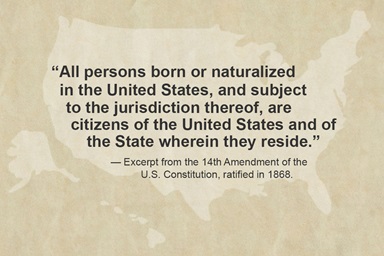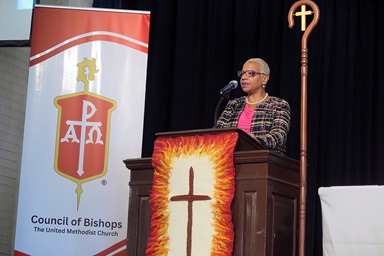United Methodist conference treasurers aren’t singing “Happy Days Are Here Again,” but they’re not singing the blues either.
A number of United Methodist financial personnel say a mood of cautious optimism holds. Giving during the last couple of years has been steady, and there is a notable improvement from the deep recession of 2009.
PAID In Full
The following U.S. conferences that paid full general church apportionments in 2013:
Alaska, Baltimore-Washington, Central Texas, Desert Southwest, East Ohio, Greater New Jersey, Holston, Illinois Great Rivers, Iowa, Minnesota, New York, North Carolina, Oklahoma Indian Missionary, Peninsula Delaware, Red Bird Missionary, Tennessee, Western Pennsylvania, West Michigan, West Ohio, West Virginia
Preliminary figures from the General Council on Finance and Administration, the denomination’s finance agency, show 2013 United Methodist giving well in line to meet the denomination’s budget and serve its ministries.
“Bottom line, we had a pretty good year financially,” Charlie Moore announced at the February board meeting of the finance agency. He is the chair of the board’s committee on General Agency and Episcopal Matters and a member of the Baltimore-Washington Conference.
Last year, United Methodists gave nearly $128.6 million to general church funds, about 89 percent of the requested apportionments. In 2012, United Methodists gave slightly more — $132.7 million to general church funds, an apportionment-collection rate of about 90 percent.
The denomination's budget for general funds is based on the assumption that 86 percent of apportionments will be collected.
Apportionments are the share each annual conference or local church pays to support international, national and regional missions. At the general church level, the money supports bishops, United Methodist ministerial education, most general agencies and denomination-wide efforts such as the Black College Fund and Africa University in Zimbabwe.
Twenty of 59 U.S. conferences paid full apportionments to support the national and international United Methodist ministries of the general church in both 2012 and 2013.
Moore noted that the recent giving marks a significant change from five years ago. In 2009, only 14 of what were then 62 U.S. conferences paid full apportionments. Because of that, there were postponed projects, pay reductions and staff layoffs at all levels of The United Methodist Church.
“Many of us feel like we’re through the worst of the recession,” Lisa King, Wisconsin Conference treasurer, told United Methodist News Service in an interview. She is president of the National Association of Annual Conference Treasurers.
“Part of what we’re also seeing — at least in some annual conferences — are churches that are merging or reducing pastoral support. They had to make some tough decisions, but they are stronger financially.”
Reducing the burden on U.S. churches and conferences
In part because of the economic downturn, General Conference — the denomination’s quadrennial legislative assembly — for the first time in 2012 set a lower budget than the amount set for the previous four years. The budget for general church funds during the 2013-2016 period is $603.1 million — a reduction of 6.03 percent from the previous period.
How Church Dollars Are spent
When you put a dollar in the regular offering at your church, here is how that dollar typically is distributed:
• 90 cents will remain at your local church for your church to decide how to spend
• About 8 cents will go to support programs in the district, annual (regional) conferences and jurisdictions*
• 2 cents will go to support the denomination's seven apportioned funds**
*Because of the different ways annual conferences fund their clergy pension and health benefits, the actual percentage of local church spending going to apportionments can vary significantly from conference to conference. In annual conferences where these benefits are apportioned (rather than direct billed), the percentage of all local church spending for apportionments can range as high as 13 percent.
** This distribution does not include special offerings your church might take up such as collections for Special Sundays or Advance designated giving to disaster relief.
King said the smaller general church budget has helped by reducing the apportionments requested of conferences and churches.
U.S. United Methodists bear the lion’s share of general church expenses.
Every annual conference in Africa, Europe and the Philippines contributes at least 10 percent of its bishop’s office expenses. Some pay as much as 80 percent. But the General Council on Finance and Administration has made it a goal for the 76 conferences outside the United States to contribute more to the denomination’s global ministries in the coming years.
“We are in the process of soliciting pledges and donations from annual conferences outside the United States for this quadrennium, which we look forward to celebrating at the next General Conference,” said Scott Brewer, who oversees the finance agency’s policy, data and research.
African church leaders also have expressed an interest in contributiing more funds to the general church.
The agency is helping to develop an apportionment formula for the conferences, which ultimately would need the 2016 General Conference’s approval. The process for planning the 2017-2020 budget is just getting under way.
How U.S. conferences are faring
For now, the financial health of most U.S. conferences also seems stable, if not a bit better.
Randy Bowman, executive director of administrative services/treasurer of the Desert Southwest Conference and the 2013 president of the National Association of Annual Conference Treasurers, surveyed fellow treasurers last year.
He found that more U.S. conferences are modestly increasing budgets in 2014 than are cutting budgets or staying flat. Averaging the 46 conferences that responded, he found an overall 0.1 percent increase in 2014 budgets. Starting this year, with the merger of three conferences into the Great Plains Conference, the United States has 57 conferences.
The National Association of Annual Conference Treasurers also has a spreadsheet on the amount of apportionments conferences received from their local churches in 2013. As of January, treasurers from 38 conferences had responded.
Resources on Apportionments
The average collection rate was about 86.7 percent, down by about 0.1 percent from 2012 levels, said Christine Dodson, who maintains the spreadsheet. She is the treasurer and business manager for the North Carolina Conference, as well as a General Council on Finance and Administration board member.
Many conferences were able to increase what they send to the general church through their own controlled spending and positive investment returns.
The Desert Southwest Conference is one example. After ample giving through most of 2013, Bowman said, conference receipts were “very disappointingly flat” in December. The conference revenues ended up roughly 3 percent below those in 2012, yet the Desert Southwest still had an operating surplus and was able to pay 100 percent apportionments to the general church.
It’s too soon to say how full offering plates will be in 2014. But, Bowman noted, his conference just saw its best January in memory.
U.S. conferences have not yet returned to their high point in 2007 when they collected an average 87.7 percent of apportionments from local churches, Dodson said. But, the last two years have still been far better than 2009, when the conference collection rate averaged 85.1 percent.
Dodson reflected on the continued commitment of United Methodists to shared ministries despite declining U.S. membership and economic hardship.
“As Paul explains in his letter to the people of Corinth, we are parts of the same body and when one part hurts, we all hurt; when one part is glad, we are all glad,” Dodson said. “The same is with our local churches' support of connectional giving. There are still many parts of our body suffering financially and struggling to make ends meet to support ministry. There are also areas that have recovered for the most part, and those areas have also continued to remain faithful to our connectional way in The United Methodist Church.”
She pointed to an example in the North Carolina Conference, which also paid 100 percent of its apportionments. There, leaders of one local church with a budget surplus at the end of 2013 contacted her to see how they could pay the apportionment balance of another church that was struggling.
“That is faithfulness.”
*Hahn is a multimedia news reporter for United Methodist News Service. Contact her at (615) 742-5470 or newsdesk@umcom.org.
Like what you're reading? Support the ministry of UM News! Your support ensures the latest denominational news, dynamic stories and informative articles will continue to connect our global community. Make a tax-deductible donation at ResourceUMC.org/GiveUMCom.




